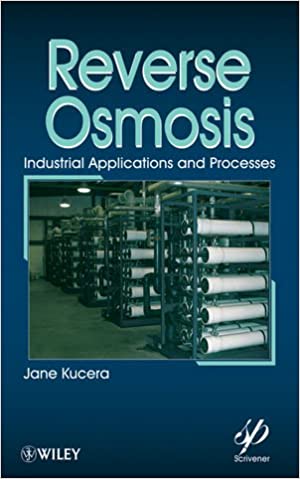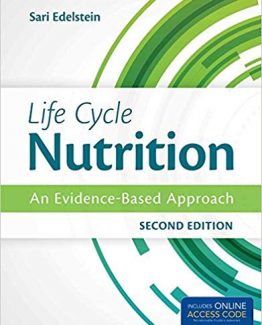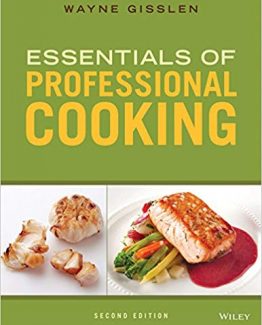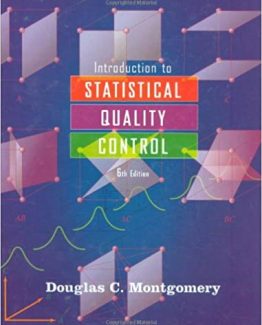Reverse Osmosis: Design, Processes, and Applications for Engineers by Jane Kucera, ISBN-13: 978-0470618431
[PDF eBook eTextbook]
- Publisher: Wiley-Scrivener; 1st edition (April 5, 2010)
- Language: English
- 416 pages
- ISBN-10: 0470618434
- ISBN-13: 978-0470618431
The most comprehensive and up-to-date coverage of reverse osmosis in industrial applications.
Table of Contents:
PART I: FUNDAMENTALS.
1. Introduction and History of Development.
1.1. Uses of Reverse Osmosis.
1.2. History of Reverse Osmosis Development.
2. Reverse Osmosis Principles.
2.1. Osmosis.
2.2. Reverse Osmosis.
2.3. Dead-End Filtration.
2.4. Cross-Flow Filtration.
3. Basic Terms and Definitions.
3.1. RO System Flow Rating.
3.2. Recovery.
3.3. Rejection.
3.4. Flux.
3.5. Concentration Polarization.
3.6. Beta.
3.7. Fouling.
3.8. Scaling.
3.9. Silt Density Index (SDI).
3.10. Langelier Saturation Index (LSI).
4. Membranes.
4.1. Transport Models.
4.2. Materials.
4.3. Modules.
4.4. Commercially-Available Membranes.
5. Basic Flow Patterns.
5.1. Arrays.
5.2. Recycle.
5.3. Double Pass.
5.4. Multiple Trains.
6. Reverse Osmosis Skid–with contributions by Mark Sadus.
6.1. Cartridge Filters.
6.2. Feed Pumps.
6.3. Manifolding–Materials of Construction.
6.4. Instrumentation.
6.5. Controls.
6.6. Data Acquisition and Management.
6.7. Auxiliary Equipment.
PART II: PRETREATMENT.
7. Water Quality Guidelines.
8. Techniques and Technologies.
8.1. Mechanical Pretreatment.
8.2. Chemical Pretreatment.
8.3. Combination Mechanical Plus Chemical Treatments.
8.4. Sequencing of Pretreatment Technologies.
PART III: SYSTEM DESIGN.
9. Design Considerations.
9.1. Feed Water Quality.
9.2. Temperature.
9.3. Pressure.
9.4. Feed Water Flow.
9.5. Concentrate Flow.
9.6. Beta.
9.7. Recovery.
9.8. pH.
9.9. Flux.
10. RO Design and Design Software.
10.1. ROSA–Dow Water and Process Solutions.
10.2. TorayDS–Toray Membrane USA.
10.3. IMS Design–Hydranautics.
10.4. ROPro–Koch.
PART IV: OPERATIONS.
11. On-Line Operations.
11.1. Performance Monitoring.
11.2. Data Collection.
11.3. Data Analysis and Normalization.
11.4. Preventative Maintenance.
12. Performance Degradation.
12.1. Normalized Permeate Flow.
12.2. Normalized Salt Rejection.
12.3. Normalized Differential Pressure.
13. Off-Line Operations.
13.1. System Flush.
13.2. Cleaning.
13.3. Lay-Up.
PART V: TROUBLESHOOTING.
14. Troubleshooting.
14.1. Mechanical Evaluation.
14.2. General Performance Issues.
14.3. Performance Projections.
14.4. Data Assessment.
14.5. Water Sampling.
14.6. Membrane Integrity Testing.
14.7. Profiling and Probing.
14.8. Membrane Autopsy.
PART VI: SYSTEM ENGINEERING.
15. Issues Concerning System Engineering.
15.1. Water Softening.
15.2. Sizing and Capacity.
15.3. Membrane Cleaning: On-Site versus Off-Site.
15.4. Reject Disposal Options.
16. Impact of Other Membrane Technologies.
16.1. Microfiltration and Ultrafiltration.
16.2. Nanofiltration.
16.3. Continuous Electrodeionization.
16.4. HERO™.
PART VII FREQUENTLY ASKED QUESTIONS.
17. Frequently Asked Questions.
17.1. General.
17.2. Operational.
17.3. Equipment.
Jane Kucera has a degree in chemical engineering from UCLA and is a chemical engineer with 25 years experience in the area of membrane technology. Jane began her work with membranes in the Seawater Laboratory at UCLA where she received her Master of Chemical Engineering degree in 1984. She worked for 7 years with Bend Research, where she worked on water re-use systems for the International Space Station. Ms. Kucera’s subsequent career path is a “who’s who” of the world’s most respected companies working in water treatment, including GE and Siemens. She joined the Nalco Company in 2003, where she is a senior engineer with a variety of responsibilities. She has approximately 40 publications to her credit, including journal articles, presentations, and book chapters.
What makes us different?
• Instant Download
• Always Competitive Pricing
• 100% Privacy
• FREE Sample Available
• 24-7 LIVE Customer Support






Reviews
There are no reviews yet.